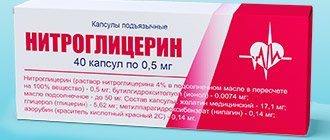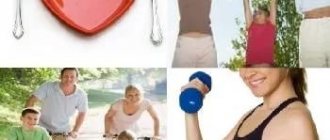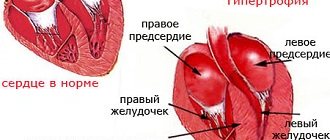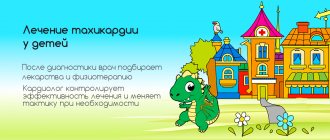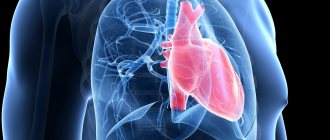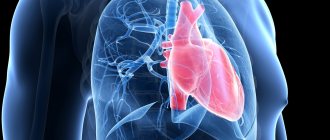Arterial hypertension in children
1. Limit salt consumption (taking into account the salt that is added to ready-made dishes). Salt retains water in the body, therefore, the volume of blood circulating through the vessels increases. This leads, in turn, to increased stress on the heart and kidneys. Also, a large amount of salt in the diet leads to edema.
2. Normalize excess weight . It is often the cause of arterial hypertension in children even of primary school age. Obese people are many times more likely to have high blood pressure compared to those who are of normal weight. With obesity, cholesterol is deposited on the walls of blood vessels, narrowing their lumen. This leads to increased blood pressure.
To reduce body weight and normalize lipid metabolism, diet No. 10 is recommended - for those who suffer from cardiovascular diseases.
3. Ensure that the child is physically active . Regular physical education, especially if it is not very active, may not be enough. Walk with your child more often. In the yard he can play active games with friends: football, volleyball, basketball, tennis, badminton. If parents have a habit of running in the mornings or evenings, it will be useful to take the child with them. Thus, he will be instilled with a culture of a healthy lifestyle.
But before increasing physical activity for a child, you should consult a pediatrician, check your blood pressure, and sometimes conduct a general examination of the body. For children who have health problems, a special complex of physical therapy may be suitable.
4. Help the teenager get rid of bad habits . Parents, setting a negative example for their children (starting from infancy), instill in them a passion for addictions. When buying alcohol with a child, remember that he understands everything even despite his very young age. And in a few years he will also reach for the bottle.
Therefore, parents must set the right example for their children so that they do not acquire bad habits and lead a healthy lifestyle. If your child already has negative habits, you can agree to stop them together. After all, support is a very important factor in changing your lifestyle. Talk to your children, communicate with them more often, then you won’t have to swear in an attempt to wean your child from smoking or alcohol.
Teenagers with bad habits have a 3 times higher chance of being diagnosed with arterial hypertension. And the longer a child’s smoking experience, the more difficult it is to quit. The disease progresses over time, and then just giving up the bad habit will not be enough. This is important to remember and explain to your child.
Hypertension in children and adolescents
It is generally accepted that high blood pressure is a problem for older people. However, today this disease has become “younger” and occurs even in children and adolescents.
What do the numbers say?
According to statistics, primary arterial hypertension (AH) occurs in 1-18% of Russian schoolchildren. The peak detection of hypertension in young patients occurs during adolescence. And in 17-26% of them, the problem of high blood pressure progresses into the formation of hypertension.
In childhood, primary arterial hypertension is more common, in which high blood pressure is not a symptom of another disease, but increases without an obvious reason for its occurrence.
Read material on the topic:
“Not a disease, but a symptom”: what is symptomatic arterial hypertension?
Why might blood pressure change?
Stress, hereditary factors, excess weight and bad habits in adolescence, vegetative dystonia syndrome and a sedentary lifestyle can contribute to changes in blood pressure levels.
You can read about physical inactivity in children here
Symptoms of hypertension in children
If a child constantly has a headache, he becomes irritable, there is a deterioration in the child’s memory and rapid fatigue, and a rapid heartbeat occurs - all this may indicate hypertension. Often, the teenager himself may not pay attention to this, believing that this happens to everyone, so adults need to monitor the well-being of their children.
How can hypertension be detected?
When diagnosing high blood pressure in children, doctors first of all exclude the symptomatic nature of hypertension, which is often associated with kidney disease, pathology of the renal vessels, endocrine glands, abnormalities of the heart, aorta and, much less frequently, with systemic vasculitis. To examine and exclude symptomatic arterial hypertension, MRI and ultrasound are used, and blood is donated for general and biochemical analysis and the detection of specific antibodies.
Read materials on the topic:
How to properly take a general blood test?
What does a biochemical blood test show?
What will a heart ultrasound tell you?
To assess blood pressure levels in children and adolescents, a special scale is used according to average age standards, which differs from that adopted for adults over 18 years of age.
Thus, in healthy children aged 3-5 years, the maximum normal blood pressure value is up to 123/82 mm Hg, and in adolescents aged 13-15 years, blood pressure should not exceed 142/93 mm Hg. However, all these indicators need to be assessed only in comparison with the specific weight and height of the child; pressure levels also vary depending on gender.
Treatment of hypertension
Treatment of high blood pressure in children and adolescents is carried out in two directions - non-drug and medicinal.
The first includes lifestyle changes - maintaining a daily routine with sufficient time to sleep, reducing table salt consumption, dosed physical activity, dieting if you are overweight, and psychological correction. Drug treatment is carried out according to regimens developed by the attending physician.
Read more about blood pressure in a child in our article
You can make an appointment with specialists here
ATTENTION: the service is not available in all cities
The editors recommend:
How to make a child become obese?
Go there - I don’t know where, cure that - I don’t know what: vegetative-vascular dystonia - diagnosis or fiction?
“Blue or white”: what are heart defects in children?
Treatment of hypertension
A moderate form of the disease does not require serious intervention. Usually no medications are prescribed for it. To eliminate symptoms and improve well-being, stress is eliminated from the child’s life both at home and at school, parents monitor and, if necessary, adjust sleep and nutritional patterns. As for nutrition, with hypertension you need to minimize the consumption of salty foods.
One of the reasons for high blood pressure is obesity in any form. In this case, a weight loss diet is selected.
For any type of hypertension, light physical activity will be beneficial: exercise therapy, swimming, walking.
If you notice that your child has started drinking alcohol and smoking, you must immediately eliminate these bad habits.
If the form of the disease is more severe or there is no effect from non-drug treatment, then drugs identical to those prescribed for adults are used. First, the child should take them in small doses, and if the response is insufficient, in higher doses. Every six months, the child needs to be examined by a therapist and/or a pediatric cardiologist. Specialists will adjust the therapy if necessary.
Age groups
Among children of different ages, the clinical picture will look the same. Parents should be wary of poor tolerance to hot weather. This may manifest as dizziness or loss of consciousness. Children often complain of headaches. A sudden increase in pressure is characterized by hemorrhage in the eyes. This reaction is typical when a sudden stressful situation occurs, and after the child calms down, the pressure returns to normal.
Additional signs include tinnitus, darkening of the eyes, or flashing spots. When the brain, blood vessels, kidneys or heart are damaged, specific signs appear. Parents begin to notice deterioration in the child’s memory, sleep disturbance, shortness of breath, and rapid heartbeat.
A prolonged increase in pressure in the absence of help quickly leads to kidney damage, which is typical for children of any age group. As a result, there is an increase in urination and its occurrence at night.
For children, critical blood pressure indicators are identified, which are typical for different age categories. From 3-6 years it should be no more than 116/76 mm. rt. Art. Upon reaching the age of 6-9 years, the indicators are 122/78 mm. rt. Art. For older children (10-12 years old), the pressure level should not exceed 126/82 mm. rt. Art. From 13 to 15 years old it is no more than 136/86 mm. rt. Art. Children from 16 to 18 years old have a blood pressure limit of no higher than 142/92 mmHg.
When the indicators increase to 140/90 mm. rt. st the following symptoms are noted:
- pain in the heart area;
- redness of the facial skin;
- nausea;
- vomit;
- tremor (shivering) of the limbs;
- excessive sweating;
- the appearance of nosebleeds;
- swelling of the face and limbs.
With a sharp jump in pressure and high numbers, signs of a crisis may appear. Children of any age are characterized by certain signs by which it can be suspected. If a child develops cold sweat, speech impairment, vision deterioration, severe headache and unmotivated anxiety, then these are symptoms that require prompt assistance.
Alarming symptoms
If blood pressure is slightly higher than normal, then general health is satisfactory. External manifestations may include irritability and fatigue.
If the blood pressure numbers are very high, then the child feels unwell, he has pain and dizziness, the heart rate increases, pain occurs in the chest, and memory often deteriorates.
There is also malignant AD. In this form, the pressure is very high, and treatment is often ineffective. The risk to health and life is extremely high.
However, the most dangerous situation is the absence of symptoms, which delays diagnosis and treatment.
As you age, your blood pressure may remain above average or rise steadily.
Causes of disease development in children
The main reasons for the development of childhood hypertension are chronic stress, neuroses, and most importantly organic pathology.
There are several causes of organic pathology leading to hypertension: kidney disease (glomerulonephritis, pyelonephritis, kidney anomalies, tumors, injuries, disruption of the walls of the vascular bed), damage to the nervous system (increased intracranial pressure, hematomas, tumors and injuries).
Vascular diseases (coarctation of the aorta, thrombosis, inflammation of the vascular walls) and endocrine diseases (hyperthyroidism, Cushingay's syndrome, hyperparathyroidism) are also important in the development of hypertension in children.
Treatment of hypertension in childhood
Correction of arterial hypertension in children comes down to the prescription of antihypertensive drugs and diuretics.
Be sure to follow a diet and avoid excessive physical and mental fatigue.
Stress factors are very important when provoking arterial hypertension in a child, so a calm psycho-emotional situation in the family and team will have a beneficial effect on the child’s health.
Physiotherapy methods have a positive effect in the treatment of children with arterial hypertension. Correction and rehabilitation are important links in helping children.
General information about the disease
Arterial hypertension (AH) affects a significant portion of the world's population (1 billion people, according to WHO).
Arterial hypertension is divided into two groups.
Essential (primary) hypertension
This is an independent pathology that develops against the background of the patient’s general good health. Causes:
- heredity;
- lack of physical activity;
- passive lifestyle;
- improper study and rest regime;
- constant stress, which develops against the background of increased psychological stress (poor relationships with peers, poor performance despite great effort, etc.);
- disrupted metabolic processes. Source: I.P. Bryazgunov Primary arterial hypertension in children and adolescents // Issues of modern pediatrics, 2003, vol. 2, no. 3, pp. 68-71
Essential hypertension usually develops after 6 years of age. Often the impetus for the development of the disease is stress at school, problems in the family, or a strong quarrel. Children who have this disease are prone to increased anxiety, depression, and fearfulness.
Hypertension also occurs in adolescents who start smoking and drinking alcohol.
Symptomatic (secondary) hypertension
This form of pathology manifests itself against the background of:
- kidney diseases;
- disturbances in the functioning of the endocrine system;
- taking medications that interfere with maintaining blood pressure at the desired level and/or raise it;
- neurological disorders.
The disease is dangerous due to many complications, including:
- hypertensive crisis (can lead to loss of consciousness);
- blood clots in blood vessels;
- heart failure;
- stroke;
- myocardial infarction;
- deterioration of vision due to damage to the blood vessels of the fundus;
- renal failure.
In the vast majority of cases, children develop hypertension of the second type - symptomatic . Its main cause at an early age is kidney pathologies (anomalies in vascular development, autoimmune pathologies, underdeveloped kidneys, Wilms tumor). Also common in children are: bronchopulmonary dysplasia, obstructive sleep apnea syndrome (stopping for 10 seconds or more or a sharp slowdown in breathing during sleep against the background of snoring), closure or narrowing of the aortic lumen. Source: N.N. Arkhipova Secondary arterial hypertension in children // Practical Medicine, 2011, No. 5(53), pp. 20-24
Among the youngest children at risk are children with diseases of the ENT organs (chronic tonsillitis, adenoids), obesity, and pathologies of the skull. Source: https://www.ncbi.nlm.nih.gov/pmc/articles/PMC3860989/ Anusha Uddaraju and C. Venkata S. Ram Hypertension in children, not a “small” problem // Indian Heart J. 2013 Sep; 65(5): 501–503.
Often in children and adolescents, blood pressure rises sharply, which can be accompanied by convulsions, headache, nausea and vomiting. Such an attack can easily be confused with a migraine, which the child may “outgrow,” so parents are not always vigilant enough. It is very important to measure blood pressure at such times.
Figures of increased systolic pressure at different ages
| Blood pressure, mmHg | Child's age |
| From 104 | From a week to 1 month |
| From 112 | From a month to 2 years |
| From 116 | From 3 to 6 years |
| From 122 | From 6 to 10 years |
| From 126 | From 10 to 13 years |
| From 136 | From 13 to 16 years old |
| From 142 | From 16 to 18 years old |
Remember that a home blood pressure monitor does not give accurate results. Therefore, if you have symptoms, you should consult a doctor, and in case of a severe attack, call an ambulance.
Symptoms of childhood hypertension
Hypertension in children manifests itself as high blood pressure, headache, especially in the back of the head, spots before the eyes, nausea and vomiting, weakness, double vision, numbness of the limbs, blurred vision, etc. They distinguish a state of hypertensive crisis, when blood pressure suddenly rises to high values, sometimes even convulsions can occur. Psychomotor agitation, increased urination, blurred vision and loss of consciousness may occur.
Pediatric hypertension
This is a problem in modern megacities.
Noise, constant stress of the child, mental and physical excessive activity make themselves felt.
If your child constantly has a headache, especially in the back of the head, there are spots flashing before the eyes, and an increase in blood pressure when it is measured, most likely this is hypertension in children. Basically, the psycho-emotional load is imposed on an existing pathology in the body, for example, in children under 9 years of age these are problems associated with the kidneys, but the main risk group is adolescents during puberty (12-14 years old).

